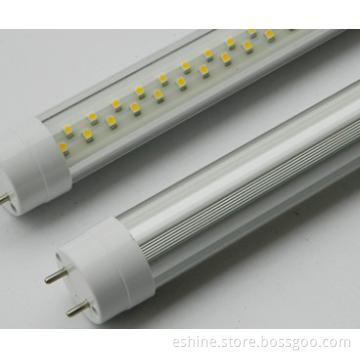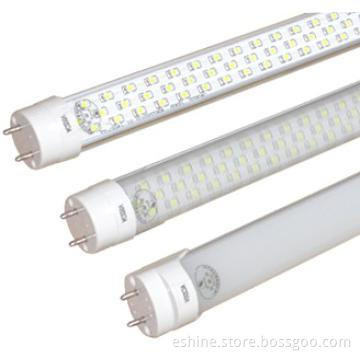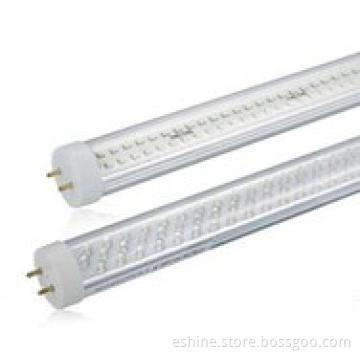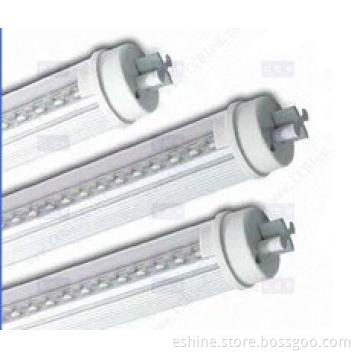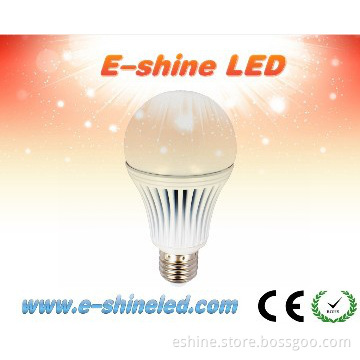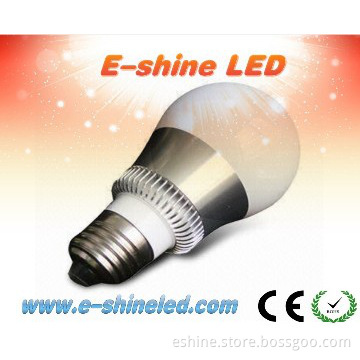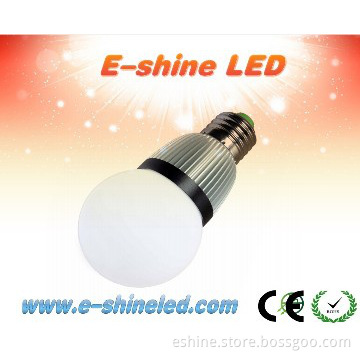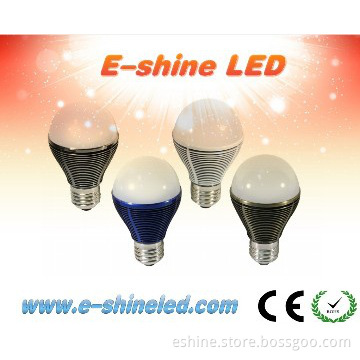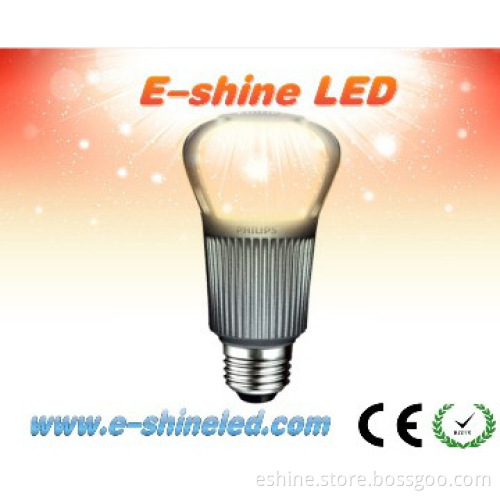
E-shine LED Bulb Lights COB High Power LEDS SMD
Your message must be between 20 to 2000 characters
Contact NowBasic Specification
| Cert | CE Rohs FCC |
|---|---|
| Lifespan | 50000Hrs |
| Emitting Color | WW / NW / DW / CW |
| Product Model | E-shine LED Bulb Lights |
| Life | 50,000 Hours |
| Power | 3W 5W 7W 9W 12W 15W 18W 20W 25W |
| Voltage | Others |
| Lamp Holder | B22, E27, GU10 |
| Color Tones | Pure White |
| Illuminant | SMD |
| Light Source Chip | Epistar |
| Shape | Odd Shape |
| Dimmable | No |
| Package | Yes |
| Power Storage or Not | No |
| Material | Aluminum, Glass, PC |
| Lamp Base | B22, E27, GU10 |
Detail Description
Buy E-shine LED Bulb Lights:
- As your incandescents burn out, it\'s a good time to consider switching to. By now, you probably know that LEDs have an impressive lifespan (20-something years!) and are very cost-effective. You probably also know that they\'re a pricey investment that can run five times more expensive than incandescents.
- Despite the cost, now\'s the right time to switch to LEDs. These bulbs have made significant advances over the last few years, finally delivering the warm light incandescents have comforted us with for decades.
- More than ever, there is also an overwhelming number of LED varieties, and choosing an LED is entirely different from picking up an incandescent. Before you head to the store, find out what you need to know about choosing the right LED bulbs.
When shopping for bulbs, you\'re probably accustomed to looking for watts, an indication of how bright the bulb will be. The brightness of LEDs, however, is determined a little differently.
Contrary to common belief, wattage isn\'t an indication of brightness, but a measurement of how much energy the bulb draws. For incandescents, there is an accepted correlation between the watts drawn and the brightness, but for LEDs, watts aren\'t a great predictor of how bright the bulb will be. (The point, after all, is that they draw less energy.)
For example, an LED bulb with comparable brightness to a 60-watt incandescent is only 8 to 12 watts.
But don\'t bother doing the math -- there isn\'t a uniform way to covert incandescent watts to LED watts. Instead, a different form of measurement should be used: lumens.
The lumen (lm) is the real measurement of brightness provided by a light bulb, and is the number you should look for when shopping for LEDs. For reference, here\'s a chart that shows the watt-lumen conversion for incandescents and LEDs.
As you can see in the chart above, an incandescent can draw up to five times as many watts for the same number of lumens. Get a sense of the brightness (in lumens) you need before heading to the store, and throw away your affinity for watts.
Mind the color:You can always count on incandescents providing a warm, yellowish hue. But LEDs come in a wide range of colors.
As shown off by the , LED bulbs are capable of displaying an impressive color range, from purple to red, to a spectrum of whites and yellows. For the home, however, you\'re likely looking for something similar to the light that incandescents produce.
The popular colors available for LEDs are \"warm white\" or \"soft white\" and \"bright white.\"
Warm white and soft white will produce a yellow hue, close to incandescents, while bulbs labeled as bright white will produce a whiter light, closer to daylight and similar to what you see in retail stores.
If you want to get technical, light color (color temperature) is measured in kelvins. The lower the number, the warmer (yellower) the light. So, your typical incandescent is somewhere between 2,700 and 3,500K. If that\'s the color you\'re going for, look for this range while shopping for LED bulbs.
Set your savings expectations: LED bulbs are like hybrid : cheaper to operate but pricey upfront.
When switching to LED bulbs, don\'t expect to save buckets of cash. Instead, think of it as an investment. Luckily, competition has increased and LED bulbs have come down in price, but you should still expect to pay much more than an incandescent.
Eventually, the LED bulbs will pay off, and in the meantime, you\'ll enjoy less heat production, longer bulb life, and other LED-exclusive benefits.
Bottom line: unless you\'re replacing many incandescent bulbs in a large house, you won\'t see significant savings in your electricity bill.
For a detailed breakdown of the cost-effectiveness of LED bulbs, .
The \'dimmable LED\' conundrum-Because of their circuitry, LEDs are not always compatible with traditional dimming switches. In some cases, the switch must be replaced. Other times, you\'ll pay a little more for a compatible LED.
Most dimmers, which were likely designed to work with incandescents, work by cutting off the amount of electricity sent to the bulb. The less electricity drawn, the dimmer the light. But with your newly acquired knowledge of LED lingo, you know that there is no direct correlation between LED brightness and energy drawn.
If you\'d like your LED to be dimmable, you need to do one of two things: find LED bulbs compatible with traditional dimmers, or replace your current dimming switch with a leading-edge (LED-compatible) dimmer.
When shopping for LEDs, it helps to know what kind of dimming switch you have, but if you don\'t know (or would rather not go through the trouble), simply search for LED bulbs compatible with standard incandescent dimmers.
Plan for placement-Knowing where it\'s OK to place an LED will ensure that the bulb won\'t fizzle ahead of its time.
You probably know that LED bulbs run dramatically cooler than their incandescent cousins, but that doesn\'t mean they don\'t produce heat. LED bulbs do get hot, but the heat is pulled away by a heat sink in the base of the bulb. From there, the heat dissipates into the air and the LED bulb stays cool, helping to keep its promise of a very long life.
And therein lies the problem: the bulb needs a way to dissipate the heat. If an LED bulb is placed in an enclosed housing, the heat won\'t have anywhere to go, sending it right back to the bulb, and sentencing it to a slow and painful death.
Consider where you\'d like to place your LED bulbs. If you have fully or semi-enclosed fixtures you need to light up, look for LEDs that are approved for recessed or enclosed spaces.
Additional Information
| Payment Terms | L/C, T/T, Western Union, Paypal |
|---|---|
| Minimum Order | 500 |
| Lead Time / Delivery Time | 12 Day(s) |
| Sample Available | YES |
| Delivery Details | 1. Payment term: 100% T/T for samples; For bulks 30-50% deposit before producing, 50-70% balance before shipping. 2. Delivery time: 3-5working days for samples, 10-15working days for bulks. |
| FOB Port | Shenzhen |
| Loading Info | Delivery time: 3-5working days for samples, 10-15working days for bulks. |
| Packing Info | 100PCS / CTN |
| Target Market(s) | North America, Oceania, Southeast Asia, Eastern Europe, Africa(except Middle East), Hong Kong/ Macao/ Taiwan, Latin America, Japan & Korea, Middle East & South Asia, Mainland China, Western & Southern Europe, Northern Europe, Central & Southern Asia, Middle East |
Related Keywords





